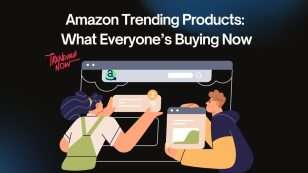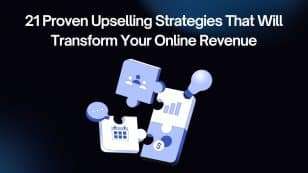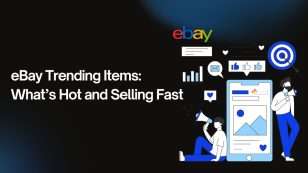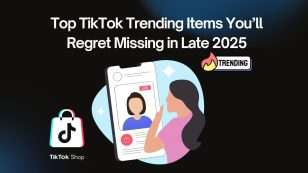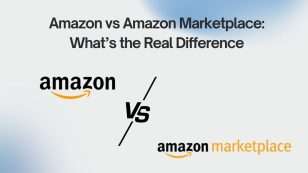In the world of ecommerce, your store’s success doesn’t end at checkout — in fact, that’s where the real relationship begins. Email marketing remains one of the most powerful tools for building long-term connections with your customers, and if you’re running a Shopify store, you’re already halfway there. With built-in tools and seamless integrations, Shopify makes it easier than ever to launch automated, personalized, and beautifully branded email campaigns.
But let’s face it: staring at a blank email template can be intimidating. Should you go for bold visuals or keep it minimal? Is your welcome email too pushy? What exactly makes a great abandoned cart message work?
That’s where real-world examples come in. In this article, we’ll explore 7 Shopify email examples from successful brands that have mastered the art of ecommerce communication. Whether you’re welcoming new subscribers, recovering lost sales, or launching a new product, these examples will give you the inspiration — and the practical takeaways — to improve your own email strategy.
Let’s dive in and see what works, and more importantly, why it works.

Why Email Still Rules in Shopify Marketing
Despite the rise of social media, influencer marketing, and AI-generated content, email marketing continues to deliver some of the best ROI in ecommerce. According to recent studies, email drives an average of $36 for every $1 spent, making it one of the most cost-effective channels available to online retailers1.
For Shopify store owners, this advantage is even more pronounced. With built-in tools like Shopify Email and easy integrations with platforms like Klaviyo and Omnisend, merchants can set up automated emails for ecommerce that trigger based on customer behavior — think welcome emails, abandoned cart reminders, product updates, and reorder nudges. No manual work, just smart, data-driven communication.
Even more compelling? Email consistently outperforms social media in conversion rates, especially when it comes to cart recovery and re-engagement. Unlike social posts that disappear in a feed, a well-crafted email lands directly in your customer’s inbox — personalized, timely, and action-ready.
That’s why the smartest brands on Shopify are leaning into email more than ever. And by studying their strategies, you can too.
7 Shopify Email Examples to Learn From
Behind every successful Shopify brand is a smart email strategy. These seven real-world examples showcase how thoughtful messaging, design, and timing can turn casual browsers into loyal buyers. Let’s dive into the first three and break down why they work so well — and what you can take from them.
- Welcome Email
When a new subscriber joins your list, they’re not just asking for discounts — they’re inviting your brand into their inbox. Allbirds, the eco-conscious footwear company, knows how to make that first impression count. Their welcome email is a model of simplicity, brand clarity, and warmth.
From the moment you open it, the email feels like a quiet, friendly handshake. The design is clean, free of clutter, and reflects the natural aesthetic of their wool shoes and environmental mission. Instead of diving into product listings, Allbirds takes a moment to introduce their story — who they are, why sustainability matters to them, and what the subscriber can expect moving forward.
Key elements:
- A calm, friendly subject line that feels like a real human wrote it
- Messaging that reinforces brand values over a hard sell
- Clear but subtle CTAs like “Shop Bestsellers” or “Learn About Our Materials”
Takeaway: Your first email sets the tone for everything that follows. Allbirds uses that moment to establish trust and identity, not pressure. For your store, aim to make the welcome feel less like a pitch — and more like a handshake.
- Abandoned Cart Email
Cart abandonment happens — but it’s also one of the most powerful opportunities to recover sales. Gymshark, the UK-based fitness apparel giant, uses abandoned cart emails that are sleek, timely, and persuasive without ever feeling aggressive.
The magic lies in their precision. Their email hits within hours of the cart being left behind, while the purchase intent is still warm. Right away, they remind the customer what was left behind — showing high-quality product photos and names in a clean layout. But rather than guilt-tripping or spamming the reader, Gymshark keeps the tone friendly and energizing.
What makes it effective:
- A relatable subject line like “Still thinking it over?” that feels human
- Visually-driven layout with product imagery front and center
- Light touch of urgency: “Items in your cart may sell out soon!”
Takeaway: Gymshark’s approach proves that abandoned cart emails don’t need to scream “SALE!” or flood inboxes. Instead, focus on timing, clarity, and making it effortless for customers to come back and finish what they started.
- Product Launch Email
Few brands know how to build excitement like ColourPop. Their product launch emails are anything but subtle — and that’s what makes them effective. With bold visuals, electric copy, and a touch of exclusivity, ColourPop turns every new product drop into a full-on event.
Take one of their recent launches: the subject line read “Just Dropped: Your New Fave,” accompanied by animated product shots, rich swatches, and links to early access. The design was unapologetically colorful and on-brand, aimed squarely at their Gen Z and millennial audience. It felt like being in the front row of a launch party — with the bonus of being able to buy right away.
What they nail:
- Brand-consistent voice that mirrors their audience’s language
- Emphasis on FOMO with early access or limited-time availability
- High-quality visuals that feel more like a fashion mag than a promo
Takeaway: A product launch is your moment to shine. Let your audience feel like they’re part of something exclusive and exciting. Even a simple product update can feel special if you present it with personality and urgency.
- Order Confirmation Email
An order confirmation email is typically a formality — a digital receipt and nothing more. But Beardbrand, a men’s grooming company known for its stylish branding, takes it a step further. Their email doesn’t just confirm the purchase — it deepens the relationship.
After a customer checks out, Beardbrand’s confirmation email arrives with clean visuals, a confident tone, and a personalized message that reminds the buyer they’ve joined a tribe, not just bought a product. Alongside the order summary, there’s a message from the founder, helpful grooming tips, and a link to the brand’s YouTube channel for beard care advice.
What stands out:
- Clean, branded design that makes the message feel intentional
- A personalized note that adds warmth and authenticity
- Bonus content that adds value without upselling
Takeaway: Every email is a chance to tell your brand story. Don’t waste the order confirmation on just logistics — use it to remind customers why they chose you and what else they can engage with.
- Re-engagement Email
Even the most loyal subscribers can go cold. That’s why re-engagement emails are crucial — and Casper, the direct-to-consumer mattress brand, does them brilliantly.
Instead of guilt-tripping or sounding desperate, Casper uses lighthearted humor and empathetic messaging. One of their standout subject lines read: “We miss you more than your bed does.” The body of the email doesn’t push products right away; instead, it offers helpful sleep tips, links to recent blog posts, and a gentle nudge to check out what’s new.
Why it works:
- Humor that aligns with their fun, sleep-centric brand
- Valuable content that feels generous, not salesy
- A tone that says, “We get you,” rather than, “Where have you been?”
Takeaway: Re-engagement emails should feel like a friend checking in — not a brand chasing numbers. Offer genuine value first, and let the call to action feel like a natural next step.
- Seasonal Promotion Email
Seasonal sales are everywhere — so standing out requires more than just a coupon code. Blenders Eyewear, a lifestyle sunglasses brand on Shopify, nails their seasonal promotion emails with a mobile-first design and razor-sharp focus.
One example: their summer sale email features bold headlines, vibrant beach imagery, and a short, punchy message like “The heat is on — 25% off all sunnies!” The CTA is big, clear, and placed early in the scroll — perfect for users browsing on their phones. Instead of overwhelming with multiple product links, they streamline the experience with one goal: click and shop.
Why it pops:
- High-contrast visuals that scream “seasonal vibe”
- Clear, singular message that doesn’t confuse or distract
- Mobile-optimized layout with instant CTA visibility
Takeaway: Your seasonal emails should reflect the moment — visually and emotionally. Make the offer easy to spot, the design easy to tap, and the timing just right.
Quick Tips to Improve Your Own Shopify Emails
Not every email needs to reinvent the wheel. Sometimes, a few smart adjustments can take your campaigns from average to high-converting. If you’re building your email strategy on Shopify, here are some quick, practical tips to elevate your results — without overcomplicating things:
- Don’t over-design: Fancy layouts can look great but often distract from your message. Keep it clean and focused — clarity beats cleverness every time.
- Craft sharp subject lines: Aim for 5–7 words that spark curiosity or emotion. It’s the first thing people see, so make it count.
- Automate the essentials: Set up email flows for key moments like signups, abandoned carts, first-time purchases, and repeat orders. Shopify makes this easy with built-in automation and integrations.
- Include a strong CTA: “Learn more” is vague — go for action-driven prompts like “Get 20% Off” or “Finish Your Order.”
- Test on mobile: Most shoppers check email on their phones. Make sure yours look good and load fast.
- Segment your list: Don’t talk to everyone the same way. New customers, VIPs, and at-risk users all need different messages.
Shopify integrates smoothly with powerful tools like Klaviyo and Omnisend, giving you access to behavioral data that lets you personalize and automate like a pro.
Conclusion
Email marketing isn’t just alive — it’s thriving, especially in the world of Shopify. As we’ve seen from these seven real-world examples, the most effective emails aren’t necessarily the flashiest or most complex. They’re the ones that feel timely, authentic, and built with the customer in mind.
Whether it’s a warm welcome like Allbirds, a cart reminder that works like Gymshark’s, or a fun re-engagement message like Casper’s, these emails all share one thing in common: they know their audience and speak directly to them.
With Shopify’s built-in tools and integrations, creating these kinds of high-performing emails is more accessible than ever. Start with the basics — automate key touchpoints, stay true to your brand voice, and test what resonates. You don’t have to copy these brands exactly. Instead, let them inspire your own version of excellence.
Your inbox is your stage. Use it well — and your customers will keep coming back for more.
![]()



